My indigenous name is Kuljelje.Paljuvaqan. I grew up beneath the beauty of Dawu Mountain. Dawu Mountain is famous for its clean water. Linhousilin Flatland Forest Park lies at the mountain’s base, a natural environment with vast grasslands, rich forests, and pure spring water from Dawu Mountain.
When I was young, I used to swim, dive, and catch shrimp at the Er-Feng Canal. When typhoons hit, water from the Linbian River surged downstream, roaring as it collided on boulders in the river. After the typhoon passed, I’d walk with my friends from the village to the middle of the suspension bridge to see the swirling torrent. From that vantage point high above the river, you could gaze down on the fertile sugarcane fields on both sides of the river. There was no end in sight.
As I grew up, I learned that Linbian River drains into the Taiwan Strait and that Er-Feng Canal irrigates the southern Pingtung Plain. I realized the places seen with my young eyes were Dawu Mountain, Er-Feng Canal, and the Pingtung Plain. This is where I grew up, experiencing life near water.
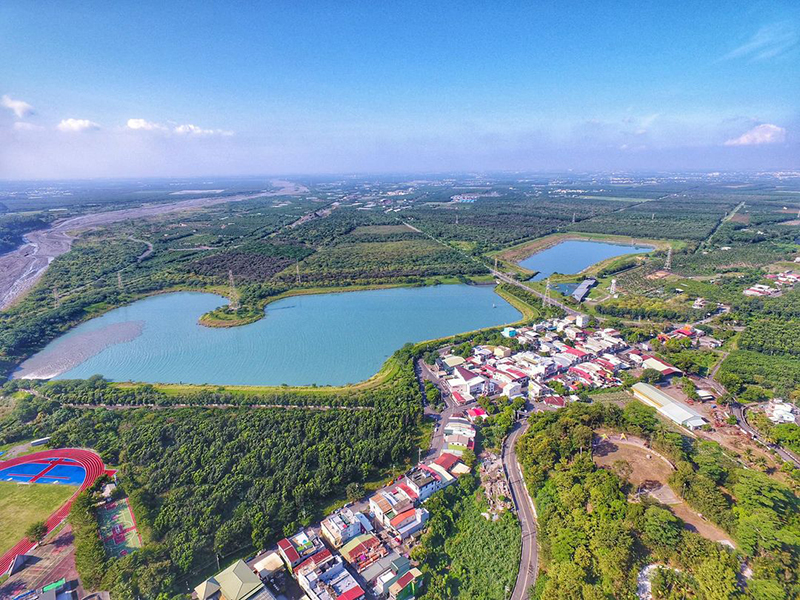
Great Chaozhou Artificial Lake and indigenous communities. Photo credit: Guo Zhi-hao
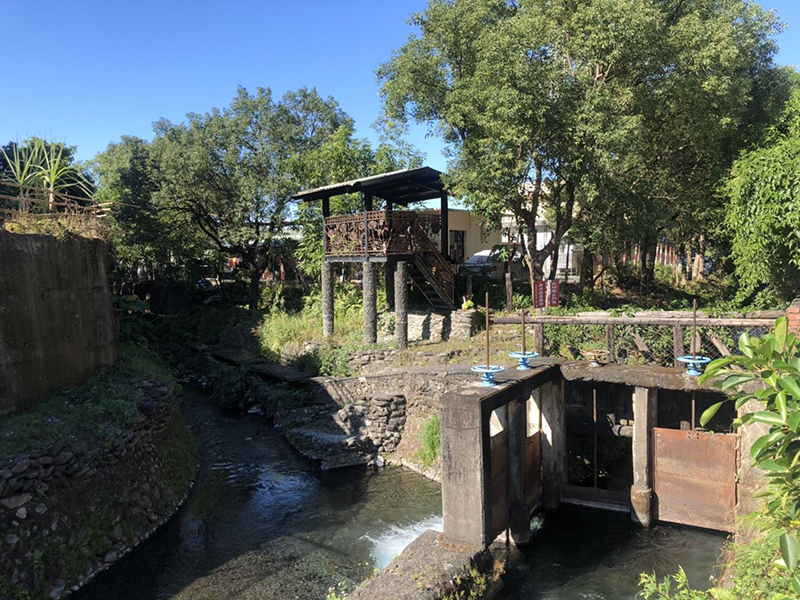
Er-Feng Canal next to Lai Yi Elementary School. Photo credit: Lai Yi Township Office Pingtung County
The Concept of Water Resources
Some scholars of water conservation and environmental protection say that water governance is about nothing more than quantity and quality. In 1988, for example, UNESCO and the World Metrological Organization (WMO) defined water resources as “water available, or capable of being made available, for use in sufficient quantity and quality at a location and over a period of time appropriate for an identifiable demand”.
When my father was a teacher at Lai Yi Elementary School in Pingtung County, he often took me to see the night scenery. Next to the school’s night office was Er-Feng Canal’s primary water diversion facility. The water in the canal’s collection corridor was clear and pure, thanks to the indigenous communities upstream. Their land protection ensures the abundance of clean water that irrigates and nourishes fields downriver, which creates a culture corridor. It’s Lai Yi Township’s ideal location for environmental education.
As a child, I didn’t know it was the famed Er-Feng Canal. I only knew the water was always clean and pure. By 2021, the famous Great Chaozhou Artificial Lake sat in front of my family’s ancestral home. The lake’s construction was so important that President Tsai Ing-Wen presided over the ribbon-cutting ceremony. The 300-hectare Great Chaozhou Artificial Lake was built to reduce land subsidence in Jiadung, Linbian, and Fangliao Townships. By replenishing groundwater through the lake, subsidence in downstream coastal areas is slowed, and 100,000 cubic meters of groundwater is supplied per day. The water comes from the upper reaches of the Linbian River, an area closely connected to indigenous territory.
Self-Sufficient, Sustainable Community Built on the Concept of Symnergy
My studies are related to green energy, bioenergy, and environmental engineering. I have researched technology to convert high concentration organic wastewater into green bioenergy. The problem of limited energy and resources is a bottleneck that scientists are committed to breaking through. We hope to find energy that takes into account both environmental protection and human development.
I conducted the Gaseous Biomass Energy System Demonstration in Rural Area of Manado City Indonesia under the National Energy Program-Phase II to help the flood-stricken Indonesian city of Manado build the Demo and Training Power Station of Two-Stage Biohythane Production (HyMeTek). This facility will convert manure and agricultural waste into electricity, and help deal with local power shortages caused by a major disaster. Generating electricity from biomass can help reduce dependence on coal and oil. It’s renewable, and it’s very eco-friendly.
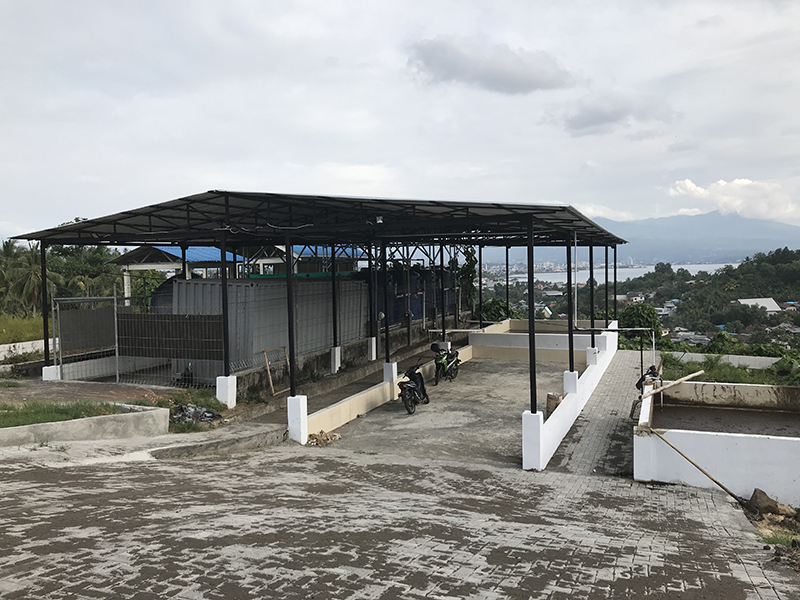
Demo and Training Power Station of Two-Stage Biohythane Production (HyMeTek) in Manado.
The idea to cooperate can be traced back to the APEC Energy Working Group conference held in Wellington, New Zealand in 2017. We learned that a flood hit Manado in 2014 that displaced about 2,500 families. The government tried to help affected residents relocate, but power shortages and organic waste created by local agricultural activities were problems. If the waste was not handled properly, it would cause serious pollution and waste natural resources. Then, “symnergy” (symbiosys bioenergy) was introduced to Manado. Organic waste is converted into energy using biomass conversion technology that can treat organic solid waste and wastewater and achieve dual benefits of environmental protection and energy recovery.
Symnergy is an integrated model of biological waste management. It can improve a community’s environment, benefit the economy and education, and create jobs. Symnergy outputs biogas, bioelectricity, and bio-fertilizers in a cycle of biomass energy, bio-economy, and agricultural products that allows communities to reach sustainability.
Bailang Village in Indonesia lacks electrical supply. A neighboring slaughterhouse provides a source of biogas. Many flood victims live in this area. Low incomes lead to low education, fewer job opportunities, and a decreased standard of living. The local community accepted HyMeTek - and the difference new job opportunities makes to villagers. By replacing liquefied petroleum gas with biogas, villagers can earn additional yearly income from bioenergy generation. They plant chili peppers using bio-fertilizers produced by the biogas plant, and sell them to earn extra income. This confirms the Symnergy model’s self-sufficiency and positive impact on the environment and community.
We built another biohythane-based power plant in Thailand’s Northeastern Science Park. In my “smart city and environmental simulation” course at Feng Chia University’s iSchool, I use the CDIO innovative teaching model to lead undergraduates, graduates, and Ph. D. students through problem solving projects. Using compound renewable electricity supply to “optimize smart green energy technology”, biogas, solar energy, and hydropower generation are integrated. We brought this model to Alang Gluban and the Green Birth Farm at Alang Togan. The circular economy model can be used for the application and transformation of indigenous resource governance concepts.
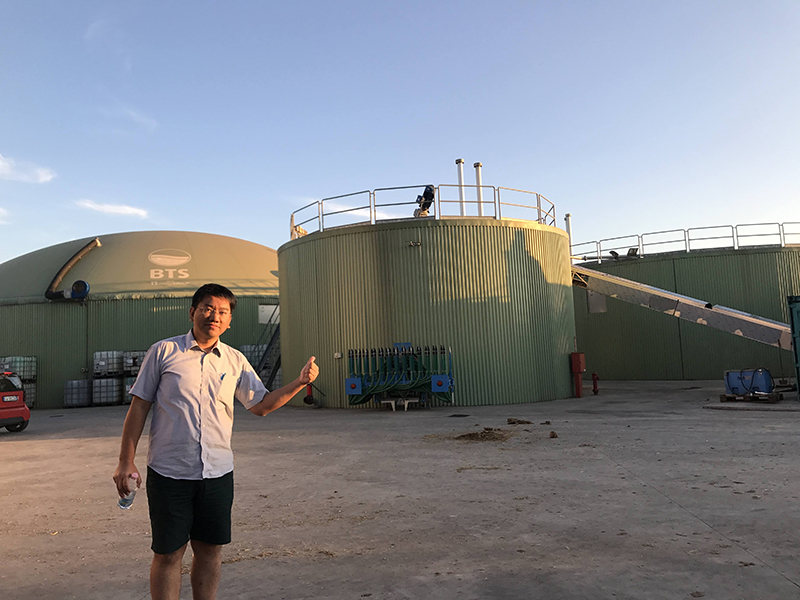
A large-scale, high-efficiency biogas power plant in Europe.
A Beautiful Hometown Starts with Eco-Friendliness and Sustainability.
When I was in the second or third grade, Taiwan Sugar built two hog farms in Pingtung, one beside the road between Dawu Mountain and Chao Zhou Township, the other near Er-Feng Canal. Around that time, my mom got a job at Taiwan Sugar’s hog farm. I remember writing my assignments on the floor of a pen after it was cleaned. There were no bad odors, only the pleasant smell of pig feed. Over time, the equipment of forty years ago and poor procedures reduced wastewater treatment efficiency. Hog farms without wastewater treatment facilities and medium-sized farms that didn’t want to increase wastewater treatment began relocating near indigenous communities to evade government inspections. They discharged untreated wastewater under the cover of night, the foul odor particular to hog farming wafting over the village from time to time.
This isn’t an impossible problem. Northeast of County Highway 185 is the hometown of the indigenous peoples of Dawu Mountain. Paiwan and Rukai peoples there have a good farming environment and strong cultures. To the west is the Pingtung Plain, formed by the Linbian, Donggang, Ailiao, and Gaoping Rivers. The Pingtung Plain produces a wide variety of cash crops, like rice, bananas, wax apples, pineapples, Adzuki beans, red quinoa, red dragon fruit, black beans, coffee, and cocoa. In satellite images this land looks like the vast agricultural areas of Europe.
Drive for a few minutes across the countryside and you can see one of Europe’s 20,000 large-scale, high-efficiency biogas power plant. To raise the proportion of renewable energy, those facilities treat the high-strength organic wastewater and agricultural waste and generate green energy. The biogas residue and slurry can be used as fertilizer that improves crop yields and maintains soil fertility.
In Nantou County I had the chance to meet the operators of Xin He Xing Ranch. They are keen to reduce the environmental impact of pig farming. We hit it off and decided to build the world’s first biohythane power plant on a hog farm. Since it began operating in 2019, the plant has eliminated wastewater odors and generated income from selling energy on the wholesale market. If we can combine bioenergy and green technologies to convert agricultural waste for use in biogas power plants, we believe people, indigenous and non-indigenous, can deal with the problem of organic agricultural wastewater. Crops can endlessly grow, and future generations can live and work in peace and happiness. Since the 21st century, humans have been suffering from the impact of climate change. The challenges we now face stem from our disregard for the environment and greed for resources. Humans must reconcile with the Earth. It’s the responsibility of everyone on Earth to start from eco-friendliness and sustainability.
Vast fields extend thousands of miles. Intersecting paths in rice paddies. Magnificent clouds and blue skies. A boundless landscape. Pingtung Plain is like spring year-round. It’s my beautiful hometown. As I walk down its country roads, the most wonderful moments between Heaven and Earth are etched into my memory to be cherished in my heart forever.

Taiwan’s first two-stage anaerobic pig farm biogas plant.
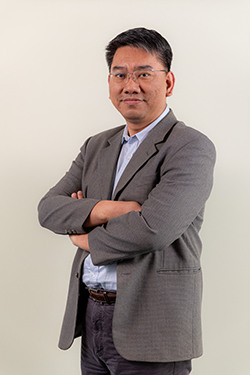 Kuljelje.Paljuvaqan
Kuljelje.Paljuvaqan
Associate Professor, Master’s Program of Green Energy Science and Technology; Director, Institute of Green Products, Feng Chia University. Specialized fields: biohythane, bioplastics, fluidized bed engineering, hydrogen energy and green technology, circular economy.




